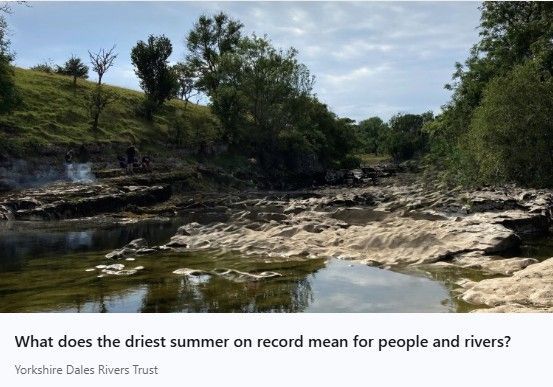Impacts of River Levels and Water Flow
Rising Flood Risk in Yorkshire
Floods are becoming more frequent, and population growth exposes more people to risk. Recent storms in winter and summer have caused widespread flooding across the UK, including Yorkshire, resulting in millions of pounds of damage to homes, infrastructure and agriculture. Flood events also harm rivers and wildlife by eroding banks, spreading invasive species, and washing pollutants from land and roads into watercourses.
Why Floods Are Increasing
Climate change is intensifying floods. A warmer atmosphere holds more moisture, producing heavier, short-duration rainfall. Historical changes to rivers and landscapes - such as straightening rivers and draining farmland or moors have reduced the land’s ability to absorb and store water. This causes rivers to rise quickly, increasing the risk of severe flooding.
Natural Flood Management Solutions
Natural Flood Management (NFM) can help slow the flow of water and reduce flood damage. Measures include tree planting, buffer strips along riverbanks, improving soil absorption, and installing ponds or leaky dams. These techniques not only protect communities but also enhance the lifespan and effectiveness of existing flood defences. Learn more about our Natural Flood Management work
here.
Flood water in York in December 2015. The Telegraph 07/01/16
Grimwith Reservoir near Hebden in drought conditions.
© Copyright Stephen Craven
